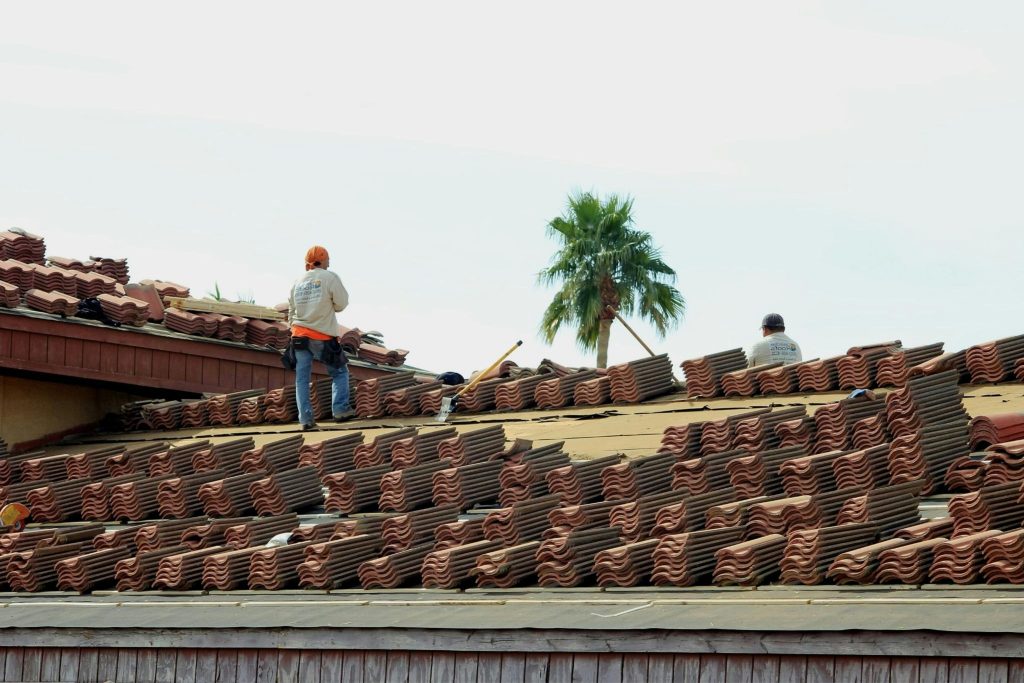Don’t let loose ridge tiles compromise your roof’s integrity – discover the expert solutions that keep your home protected
Understanding Ridge Tiles and Their Importance
Ridge tiles play a crucial role in protecting your property’s roofing system. Positioned at the apex where two roof slopes meet, these specialised components serve as both a functional and aesthetic element of your roof. In the UK, where weather conditions can be particularly challenging, properly installed ridge tiles are essential for maintaining the structural integrity of your entire roofing system. Data from the National Federation of Roofing Contractors shows that over 60% of roof-related issues stem from compromised ridge tiles.
These vital roofing elements serve multiple purposes: they protect the highest and most vulnerable point of your roof from water ingress, provide essential ventilation, and create a polished, professional finish to your property’s appearance. Ridge tiles come in various materials, including traditional clay, durable concrete, and modern composite options, each offering unique benefits for different roofing styles and requirements.
Signs of Compromised Ridge Tiles
- Visible movement or rocking when viewing ridge tiles from a safe distance
- Missing or cracked mortar between tiles
- Water stains or damp patches in your loft space
- Loose or missing ridge tiles
- Daylight visible through the roof when inspecting from inside
- Debris from deteriorating mortar in gutters
Ignoring these warning signs can lead to severe consequences, including water damage, increased heating costs, and potential structural issues. Recent studies indicate that addressing ridge tile problems early can save homeowners up to £3,000 in potential repair costs.
Professional Installation Methods
Proper installation of ridge tiles requires expertise and attention to detail. Professional roofers typically employ a combination of mechanical fixing and traditional bedding methods. The process begins with preparing the ridge with a proper underlayment and ensuring adequate ventilation. Modern installation techniques often incorporate dry-fix systems, which are becoming increasingly popular in the UK due to their reliability and compliance with current building regulations.
The key stages of professional ridge tile installation include:
- Thorough cleaning and preparation of the ridge area
- Application of appropriate underlayment and ventilation systems
- Precise positioning and alignment of ridge tiles
- Secure fixing using either mechanical or traditional methods
- Weather-proofing with appropriate sealants and pointing
Material Selection and Compatibility
Selecting the right ridge tiles involves careful consideration of various factors, including your existing roof material, local weather conditions, and architectural style. Clay ridge tiles remain the most popular choice in the UK, accounting for approximately 70% of installations. However, modern alternatives offer compelling benefits:
- Clay Ridge Tiles: Traditional appearance, excellent durability, ideal for period properties
- Concrete Ridge Tiles: Cost-effective, versatile, suitable for most modern homes
- Composite Ridge Tiles: Lightweight, easy to install, excellent weather resistance
- Metal Ridge Systems: Modern appearance, superior durability, ideal for contemporary designs
Maintenance and Long-term Care
Regular maintenance is crucial for ensuring the longevity of your ridge tiles. A comprehensive maintenance schedule should include annual inspections, particularly after severe weather events. Professional surveys reveal that well-maintained ridge tiles can last up to 50 years, while neglected ones may require replacement within 15 years.
Essential maintenance tasks include:
- Annual professional inspection of ridge tile condition
- Regular clearing of debris and vegetation
- Prompt repair of any damaged mortar or sealant
- Assessment of ventilation efficiency
- Checking for signs of water ingress or damage
Emergency Repairs and When to Act
When faced with ridge tile emergencies, prompt action is essential to prevent extensive damage to your property. If you notice any immediate issues, securing professional help should be your priority. Temporary measures can include:
- Documenting the damage with photographs for insurance purposes
- Arranging for emergency tarpaulin coverage if required
- Contacting a qualified roofing professional immediately
- Ensuring the area below is cordoned off for safety
Statistics show that emergency ridge tile repairs cost on average 40% more than planned maintenance, emphasising the importance of regular upkeep.
Preventative Measures and Future Protection
Investing in preventative measures can significantly extend the life of your ridge tiles and protect your entire roofing system. Modern solutions include advanced sealants, protective coatings, and innovative fixing systems. Consider implementing these protective measures:
- Installation of ridge ventilation systems
- Application of weather-resistant coatings
- Regular professional inspections
- Use of high-quality fixing materials
- Implementation of modern dry-fix systems
Conclusion: Ensuring Your Roof’s Integrity
Maintaining secure ridge tiles is fundamental to protecting your property’s roof and overall structure. By understanding the importance of proper installation, regular maintenance, and prompt repairs, you can ensure your ridge tiles provide lasting protection for your home. Remember to work with qualified professionals for installations and repairs, and maintain a regular inspection schedule to prevent costly emergency repairs. With proper care and attention, your ridge tiles can provide decades of reliable service, protecting your home from the challenging British weather conditions.
FAQ
Do roof ridge tiles need pointing?
The shape of the roof ridge caps will usually be curved or sloped to help rainwater run down the sides of your roof. However, the bedding and pointing of the roof ridge need to be maintained to protect and secure your roof.
Why do ridge tiles blown off?
The main causes of missing ridge tiles are severe weather conditions and mortar erosion. For example, after a particularly heavy storm, ridge tiles have been known to become loose. This can then lead to slipping following bad weather as tiles start to crack or mortar erodes.
Should there be gaps under ridge tiles?
If you are re-bedding your original tiles this shouldn’t be an issue, however some new tiles may have to be cut where two different designs of ridge (such as horizontal and hip ridges) meet to ensure there is a roughly 10mm gap for the cement joint.
What holds ridge tiles in place?
Dry fix ridge systems use nails, screws, unions, clamps, and brackets to keep the tiles in place. This mortar-free method is now the norm, and is preferred for compliance reasons (we’ll discuss the requirements of BS 5534:2014 + A2:2018 in the next section).
Are dry ridge tiles better than cement?
This is because a dry ridge system is mortar free and each tile is mechanically attached, making the whole system is much stronger and able to withstand extreme weather conditions, requiring minimal to no maintenance over the lifespan of the roof.
Sources
[1] https://www.theroof.store/product/composite-spanish-barrel-hip-ridge-rake-tile
[2] https://nhdtilestore.com/accesorios/202-hip-ridge-and-rake-universal-clay-tile.html
[3] https://ludowici.com/products/accessories/hip-ridge-systems/



